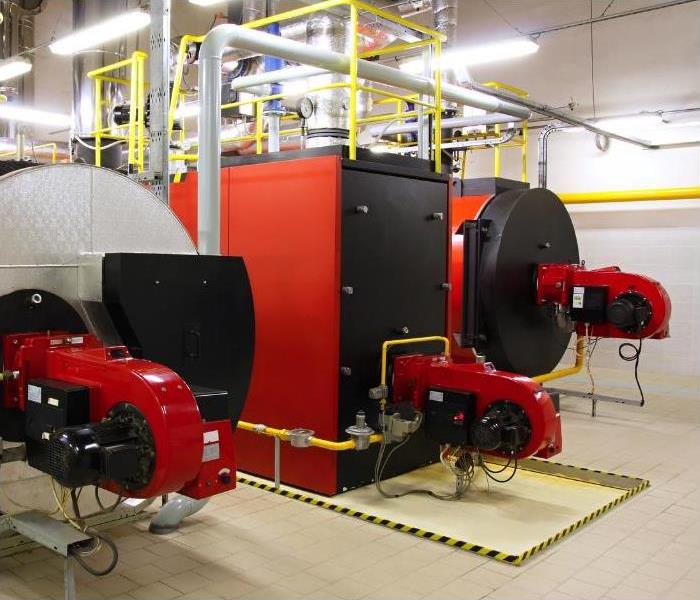3 Great Ways to Prevent Mold In A Boiler Room
11/24/2021 (Permalink)
The professionals at SERVPRO of Downtown Atlanta receive multiple calls a year regarding mold damage inside boiler rooms.
Mold needs three things to grow-moisture, heat, and organic matter. A boiler room might have all three of these in abundance; that's why it's essential to look out for any signs of mold in this area.
Our professionals at SERVPRO are highly trained to spot and clean up mold damage but would rather save you time and money by preventing mold from growing in the first place. Therefore, to avoid mold growth in a boiler room, we have created the following blog post that includes excellent tips on preventing mold growth in a boiler room.
What is mold?
Mold is a fungus. There are thousands of different types, but they all create the same effect-they destroy organic matter through decomposition. Mold is easy to spot when you have visible black spots or an odd color growing in your home or office, but mold can also be invisible.
Excess mold growth inside a home or business is cause for concern. If left unaddressed, mold can destroy the appliances in your property or even damage the structure itself. Therefore, it is essential to spot mold early and remove it as soon as possible.
What causes mold in a boiler room?
Before we get into the prevention measures, let's first discuss what causes mold in boiler rooms. The professionals at SERVPRO have found that the number one cause of mold growth in boiler rooms comes after water damage. Water damage in a boiler room can be from a malfunctioning boiler system.
Signs of mold growth are commonly visible at first glance in a boiler room. One will notice black or blue-green spots on walls, ceilings, floors, and other hard surfaces. However, not all types of mold are visible to the human eye. There are cases where bacterial growth is so severe that it is visible but still difficult to detect with eyesight alone. This makes it extremely important to use any means necessary to detect mold before it spreads throughout other parts of the property.
The three ways to prevent boiler room mold
1) Ensure the area is well ventilated
Mold thrives when there is poor air circulation, so to prevent mold growth, there must be adequate ventilation in your boiler room. You should plan to have your boilers serviced at least once a year by a professional so they can ensure proper ventilation is maintained at all times.
2) Check for leaks
One of the easiest ways to prevent mold growth is to fix any boiler leaks. The professionals at SERVPRO have come across several mold cases caused by boiler leaks. Fixing any boiler leaks will ensure that the area isn't overly moist.
Mold growth can happen within 48 hours after any excess water has sat inside a boiler room, so do not wait to fix any leaks.
3) Install a dehumidifier
The final way one can prevent mold is by installing a dehumidifier to dry out any excess moisture lingering in the air. A dehumidifier will remove any excess moisture and allow for a more optimal humidity level.
We recommend installing an electric refrigeration dehumidifier. An electric refrigeration dehumidifier is portable and will work quickly to remove any excess moisture and help prevent mold growth.
Final thoughts
As we mentioned earlier, mold needs three things to grow-moisture, heat, and organic matter, and unfortunately, it is common for a boiler room to have all three of these in abundance.
Please contact us today if you notice any signs of mold in your boiler room. SERVPRO of Downtown Atlanta is available 24/7 to help protect your business, employees, and customers from the hazards that come with excess mold growth!



 24/7 Emergency Service
24/7 Emergency Service
